Airbow
by Maria Kalaniemi & Sven Ahlbäck
[Music CD]

view/request
What is Finnish button accordion music, anyway? If you like Sharon Shannon, you’ll love Maria Kalaniemi.
She’s virtuosic, soulful and versatile. On this album she teams up with Swedish fiddler and scholar of folk music Sven Ahlbäck for a selection of traditional Scandinavian tunes and original compositions. They are both technically brilliant and have a wonderful synergy together. Johan Hedin joins them on nyckelharpa (Swedish keyed fiddle) and Swedish singer Susanne Rosenberg is featured on a few tunes. The music is spare, gorgeous, with a haunting energy that’s both ancient and contemporary. This is great listening for fans of Nordic or Celtic folk, fiddle tunes, or the undeservedly-maligned accordion.
Reviewed by Faith
Tagged: Accordion, Fiddle, Folk music, World music
Into the Lime
by The New Mendicants
[Music CD]
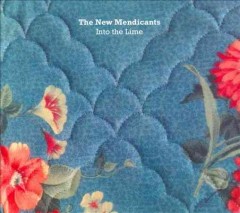
view/request
The New Mendicants are Joe Pernice, Norman Blake and Mike Belitksy. Pernice and Belitsky, Pernice Brothers alumn and current Toronto residents, met Blake (Teenage Fanclub) at a London gig back in 2000. About a decade later, Norman sent Joe a message: “Back in Canada at the end of next week. Want to be friends?”
Into the Lime‘s initial collaborative spark came care of submitting music for a film adaptation of Nick Hornby’s book A Long Way Down. Despite the novel’s dark subject matter, the album is a sweet sounding, almost like a modern day Everly Brothers record. Clever songwriting and close, two-part harmony are present throughout. Pernice takes many of the leads. He’s an American (once residing in Northampton, MA!) who tries to sound like a Brit. Blake’s pure, high harmonies are coming from a Scotsman maybe hoping one day to be a Byrd. The album is the perfect blending of voices and styles. The friendship and enthusiasm for this side project is clearly audible on the recording.
Reviewed by Jason
Tagged: Folk music, Pop music
Simon & Garkfunkel: The Columbia Studio Recordings 1964-1970
by Simon & Garfunkel
[Music CD]

view/request
Simon & Garfunkel never felt like a singles band to me. Sure, there’s the massive, mega-hits: “Mrs. Robinson”, “The Sound of Silence”, “The Boxer”, “Bridge Over Troubled Water”, “Cecelia”, etc., but Paul Simon’s songwriting abilities were never simply tunnel visioned to the radio dial. All five of Paul & Artie’s studio albums are classics that are meant to be heard front to back and then back to front again. With the Columbia Studio Recordings boxed set, we can hear every song, every angelic harmony, every sweet acoustic guitar move and every perfect arrangement.
Six or seven years is not a whole lot time in the grand scheme of things, but Simon & Garfunkel made it count with their prolific run as Columbia Records recording artists.
Reviewed by Jason
Tagged: 1960s rock music, Folk music, Pop music
Bobby Charles
by Bobby Charles
[Music CD]
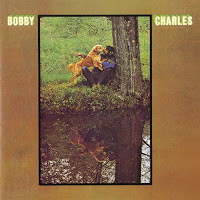
view/request
No album better represents the sound of a bunch of guys hanging out, having good times and recording music than Bobby Charles’s self-titled album. Charles, celebrated for writing “See You Later Alligator” for Bill Haley and “Walking To New Orleans” for Fats Domino, found himself relaxing with The Band in Woodstock, New York in ’71. The circumstances for his east coast residence have something to do with a divorce and hiding out from a Nashville marijuana bust.
The Band (with Dr. John in tow) back Charles through a set of lazy melodies with New Orleans influence and a loose, country bounce. With this all-star line-up, it’s really not a shocker that the backing is as cool as can be. However, it’s Charles’s voice that shines brightest. There is a exceptional fullness and soul in each word that Charles projects and yet he sometimes gives the listener the impression that he’s singing softly, almost narrating a local tale.
The feeling of living out in the country, slowing down and finding peace are intertwining themes throughout Bobby Charles. On “Small Town Talk”, after a whistled intro, Charles croons “and it’s small town talk, you know how people are/they can’t stand to see someone else doing what they want to”. “Tennessee Blues”, the album’s closer, is also no exception to this sensibility. The song is so perfect and timeless, one might imagine Charles ripped it from a book of standards at least 25 years earlier. With one of my all time favorite vocal performances (Doug Sahm’s version is definitely worth hearing as well), Charles sings:
Find me a spot on some mountain top
With lakes all around me
With valley and streams and birds in the trees
And lakes that surround me
A place I feel loose
A place I could lose these Tennessee Blues
Reviewed by Jason
Tagged: Country music, Folk music, New Orleans, Rock music, Soul music
Snockgrass
by Michael Hurley
[Music CD]
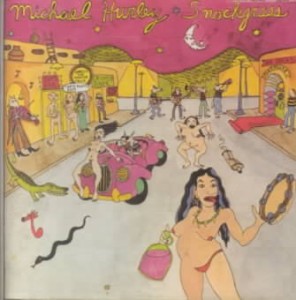
view/request
Fact: Michael Hurley (a.k.a. “Snock”) is a drastically, under-appreciated American folk singer. With a voice reminiscent of Hank Williams and a songwriting style rooted in country & western, bluegrass and the blues, Hurley has been issuing stellar material since the early 1960’s. Recent years have seen a new appreciation for the musician. Artists such as Vetiver, Lucinda Williams, Cat Power and Matloaf have cited Hurley as an influence.
1980’s Snockgrass (album not pictured here due to singer’s risque cover painting) is classic Michael Hurley. There’s plenty of swinging numbers, reflective waltzes, weirdo lyrics and country-fried boogies with the mood volleying from serious to sardonic to silly. “The Midnight Rounder”, “O My Stars” and “Watchin’ the Show” are excellent starting places for someone just beginning their Snock obsession.
Reviewed by Jason
Tagged: Blues music, Country music, Folk music
The Penny Whistle Book
by Robin Williamson
[Book]
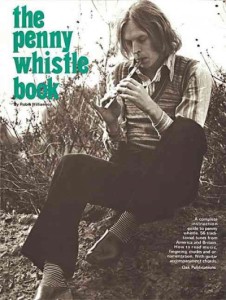
view/request
A couple months ago, I saw The Penny Whistle Book come up to the Arts & Music library and happened to notice that it was penned by the Incredible String Band’s Robin Williamson. He was essentially one half of the group, sharing vocal and songwriting duties with Mike Heron. At this time I also was thinking about the arrangement for a song of my own and was in need to have a flute or whistle type sound for a two note hook in the final chorus (a la “Penny Lane”).
The sensible thing to do I thought was to go to check out the book and head to
Downtown Sounds in Northampton and see how much one of these whistles costs… Turns out they’re very cheap (something like $10). I cracked the book open, read the introduction and was making sounds and playing scales right away.
The slim Penny Whistle Book is filled with traditional American and British tunes with accompanying illustrations that reference the era in which the pieces were most likely composed. The sheet music is also perfect for playing instrumental accompaniment like guitar or banjo because chords are placed at the top of the staffs.
The penny whistle is a fun and simple instrument to play. You really don’t need to be able to read musical notation or have special technique in operating a mouthpiece. You just place your fingers on the holes and blow!
Reviewed by Jason
Tagged: Folk music, How to, Music instruction
Hindugrass
by John Heitzenrater, Carolyn Balfe, Yunior Terr, Evan Fraser, and Austin Wrinkle
[Music CD]
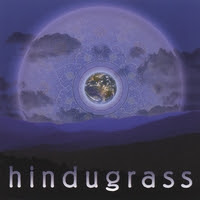
view/request
What could you find in common between the classical and folk music of Northern India, and old time and bluegrass music of the Southeastern United States? Quite a lot actually, and Hindugrass does an excellent job exploring and exploiting those similarities. Headed by John Heitzenrater on sarod, Hindugrass is alternatively haunting and driving, lyrical and percussive, familiar and strange. In addition to sarod we hear, fiddle (played in American style), bass, tabla, kanjira, bones, and other percussive instruments. The melodies comfortably shifts back and forth between a more eastern and a more western sound, but the rhythms show a primarily Indian influence, with the melodic and percussive instruments alike taking part in the polyrhythm, tihai, and other rhythmic devices that are responsible for much of the excitement of Indian music. This is an exciting recording for lovers of Appalachian and Indian music alike. You can get a preview of their music at http://www.hindugrass.net/, or borrow the CD from the library to hear the whole thing!
Reviewed by Ben
Tagged: Folk music, Indian music, World music
Talking Tabla
by Bikram Ghosh
[Music CD]
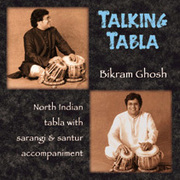
view/request
Talking Tabla is an exciting recording showing off the work of a masterful tabla player. The tabla is a popular Indian percussion instrument, and is ubiquitous in the classical music of Northern India. The tabla consists of two hand drums of contrasting designs: on the left is a kettle drum with a deep sound and variable pitch; on the right is smaller conical drum with a high, fixed pitch. The drums are struck with the fingers and palms of the hands to create the sounds known as bols, these are the syllables of North Indian drumming and can be spoken as well as played; well performed, they sound very much like language, hence the title of this album, Talking Tabla.
On Talking Tabla Bikram Ghosh plays a variety of compositions, fixed and improvised, in a variety of styles, including a piece in the less familiar Carnatic style of South India. Although Bikram Ghosh’s tabla is the focus of these recordings we are not deprived of melody—Ramesh Mishra does a beautiful job playing the sarangi (a kind of elaborate fiddle) on several tracks and on the third track Ghosh accompanies Tarun Bhattacharya’s santoor (hammered dulcimer). In addition, Ghosh’s beautiful baya (left hand drum) application creates a kind of melody of its own. (To fully appreciate this a pair of good speakers or headphones are recommended—don’t listen to this one through your laptop speakers!) Even those who are bored by the idea of an album devoted to the drums should consider listening to Talking Tabla.
Reviewed by Ben
Tagged: Drums, Folk music, Indian music
Blood on the Tracks
by Bob Dylan
[Music CD]

view/request
Once this guy I knew split up with his girlfriend and then he was gone for a while. I think he went to his uncle’s farm out in Kentucky or somewhere. When he came back, he had a beard and seemed a bit more serious. I asked him how he was feeling and he softly replied, “I’ve been listening to a lot of Blood on the Tracks, man.”
Blood on the Tracks? I had heard of that, but I was in the twilight of my teenage years: I was still thinking of and enjoying Dylan with the big curly hair, polka dot shirt, pointy shoes and Al Kooper playing groovy organ riffs. Still, I sought out this folky record.
Dylan at that time was going through the break up of a marriage and though the author denies any trace of autobiographic tendencies, the songs appear to reflect this time of his life. The album opens with “Tangled Up in Blue”, a lyrical bombast about two lives crossing. Other highlights include “Idiot Wind”, the eight minutes and change “Lily, Rosemary and the Jack of Hearts” and “Shelter From the Storm”.
Like the majority of his work, the lyrics read like poetry on Blood on the Tracks and here we find Dylan with his heart on his sleeve and at his most tender and delicate state. When I went through break-ups as a younger lad, I tended to go with early Beach Boy albums. They had those beautiful harmonies that are underlined with melancholy. It’s easy to wallow and hold onto sadness like a serpent to the neck with this sort of music. On Blood on the Tracks, Dylan is presenting a more mature and grown up outlet for heartbreak, man.
Reviewed by Jason
Tagged: Country music, Folk music, Pop music
New Morning
by Bob Dylan
[Music CD]

view/request
The late 1960’s early/ 70’s happens to be a great period for Bob Dylan, thank you for asking. Nashville Skyline, the Basement Tapes, Self Portrait (though many have said I’m crazy for admitting I like this one), Pat Garret & Billy the Kid are the albums I return to the most within this artist’s prolific catalog. 1970’s New Morning may be the most enjoyable listen from this period.
The album kicks off with the pining romance gesture that is “If Not For You”. The song has an almost Velvet Underground pulse juxtaposed with bouncy organ and country guitar picking. George Harrison would record his version the following year on his album All Things Must Pass. The bluesy and rock n’ roll sounds predictably find their way onto this record. There’s also lighthearted moments in “Winterlude” where Bob croons “this dude thinks your fine” and in the silly jazz rap “If Dogs Run Free” featuring a barrelhouse piano send up at the top of the song.
Dylan’s voice and delivery began to shift around 1968. He lost a bit of the raspy quality that his earlier recordings possessed and started leaning a bit on the softer side in his vocals. This is not to say he’s taking a casual approach to his singing; Dylan is most noticeably passionate on the title track, “Day of the Locusts” and “the Man in Me” (featured in the soundtrack of the Big Lebowski).
New Morning is just another one of those perfect Bob Dylan records.
Reviewed by Jason
Tagged: Blues music, Folk music, Pop music, Rock music
Henning Goes to the Movies
by Henning Ohlenbusch
[Music CD]

view/request
Please excuse the following burst of textual immodesty… Ahem. As founder and president (not to mention CEO, secretary, vice president & mascot) of the Forbes Film Club, I can safely say that I know a thing or two about the cinema. In addition, it was in college where I studied video and film, wrote lengthy ramblings dealing with issues within the worlds of documentary film and German cinema, composed pretentious screenplays and starred in some student produced shorts that feature poor lighting (often typecast as a chat show host, bud did sport a tricorne hat once for a period piece). I later found myself in Texas working in a video library/archive and spent most evenings devouring the collection and attending curated film festivals. To this day, little gives me greater pleasure than sitting in the theater, munching on popcorn and seeing something unfold on the big screen.
I have very personal connections to a handful of films and I believe movies we love can have a great impact on how we define ourselves. This is why Henning Goes to the Movies is so appealing.
Nine movies. Nine songs. Henning Ohlenbusch, lyricist extraordinaire/singer/songwriter of the group School For the Dead, is the architect (perhaps I should use director in this instance?) behind this wonderful album. He sings about the hilariously raunchy Super Bad, David Lynch’s quiet drama the Straight Story, the horror classic Poltergeist, the coming of age classic the Year My Voice Broke and more. His approach to these pieces is not a highlight of important plot points; rather he shares his personal experience with each film. Through introducing a specific character’s perspective or providing an overall sentiment of a movie, Ohlenbusch invites the listener to go on a cinematic journey.
His folksy pop songs are simply arranged to bring us close to the stories. He also tastefully sets the scene with appropriate backing. We find ourselves somewhere in the distant future in Logan’s Run with weaving backward electric guitar and at an old time carnival in Joe Vs. the Volcano. Though voice and acoustic guitar tend to be in the forefront throughout, keyboards, glockenspiel, subtle effects, electric bass, harmony vocals and percussion expand the mix.
This a great collection of songs, even without the movie theme. And I should mention that you really don’t need to have seen the films to appreciate the record. It is, however, even more of a gratifying listen for those of us who find that films are an important fabric of our lives.
Reviewed by Jason
Tagged: Film, Folk music, Pop music, Rock music
Grateful Dawg
by Gillian Grisman
[DVD]

view/request
This film celebrates the musical collaborations of Jerry Garcia and David Grisman. The film, by David’s daughter Gillian, is an affectionate tribute to the music created when these two musical giants worked together. Garcia and Grisman shared a common enthusiasm for bluegrass and American roots music, but Grisman had a tight and disciplined approach to the music, while Garcia was well known for his relaxed attitude. Something special happened when they worked together, as Grisman loosened up, Garcia became more focused, and each took on some of the best qualities of the other.
This film isn’t particularly rich in storytelling, and it is nothing special to look at, but it contains some good interviews with Grisman, Garcia, and their many collaborators, including Vassar Clements and Peter Rowan of Old and in the Way. The real focus of the film, however, is the music, and the camaraderie between these great musicians, and that is how it should be. The film’s editors often made the unfortunate decision to show footage, often in slow motion, which doesn’t match the music being played, but this is easy to over look. All you have to do is close your eyes and listen—and listening to these two play together is a joy.
Reviewed by Ben
Tagged: Bluegrass, Documentary, Folk music












